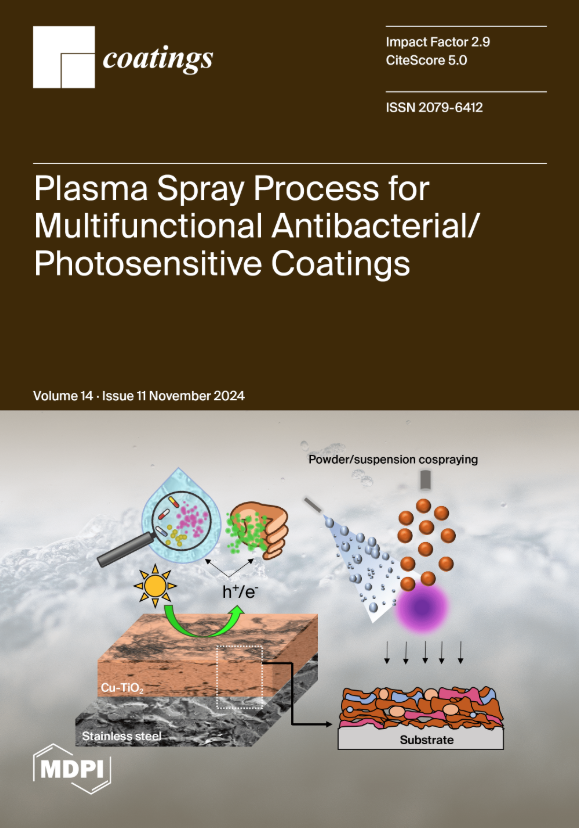Development of a Controlled Low-Strength Material Containing Paraffin–Rice Husk Ash Composite Phase Change Material
IF 2.8
3区 材料科学
Q2 MATERIALS SCIENCE, COATINGS & FILMS
引用次数: 0
Abstract
In order to reduce heat loss and diffusion of underground heating pipelines, this research incorporated phase change material (PCM) into the controlled low-strength material (CLSM) to prepare a pipeline backfill material with temperature control performance. In response to the problem that PCM leaks easily, a new type of paraffin–rice husk ash composite PCM (PR-PCM) was obtained by adsorbing melted paraffin into rice husk ash. Through mixing PR-PCM with dredged sediment (DS) and ordinary Portland cement (OPC), a controlled low-strength material (CLSM) with temperature control performance was prepared. The flowability, mechanical properties, microscopic characteristics, thermal characteristics, and durability of CLSM were analyzed through flowability, unconfined compressive strength (UCS), X-ray diffraction (XRD), scanning electronic microscopy (SEM), differential scanning calorimetry (DSC), and phase change cycle tests. The results show that when water consumption is constant, as the PR-PCM content increases, the flowability of CLSM increases, and the strength decreases. The CLSM has an obvious paraffin diffraction peak in the XRD pattern, and its microstructure is dense with few pores. The melting point of CLSM is 50.65 °C and the latent heat is 4.10 J/g. Compared with CLSM without PR-PCM, the maximum temperature difference during the heating process can reach 3.40 °C, and the heat storage performance is improved by 4.1%. The strength of CLSM increases and the melting point decreases after phase change cycles. CLSM containing PR-PCM has the characteristics of phase change temperature control, which plays a positive role in reducing heat loss by heating pipelines and temperature change in backfill areas.开发含石蜡-稻壳灰复合相变材料的可控低强度材料
为了减少地下供热管道的热量损失和扩散,本研究在可控低强度材料(CLSM)中加入相变材料(PCM),制备出具有温度控制性能的管道回填材料。针对 PCM 容易泄漏的问题,研究人员将熔化的石蜡吸附在稻壳灰中,得到了一种新型石蜡-稻壳灰复合 PCM(PR-PCM)。通过将石蜡-稻壳灰复合材料与疏浚沉积物(DS)和普通硅酸盐水泥(OPC)混合,制备出具有温度控制性能的可控低强度材料(CLSM)。通过流动性、无侧限抗压强度(UCS)、X 射线衍射(XRD)、扫描电子显微镜(SEM)、差示扫描量热仪(DSC)和相变循环试验,分析了可控低强度材料的流动性、力学性能、微观特性、热特性和耐久性。结果表明,在用水量不变的情况下,随着 PR-PCM 含量的增加,CLSM 的流动性增加,强度降低。在 XRD 图谱中,CLSM 具有明显的石蜡衍射峰,其微观结构致密,孔隙较少。CLSM 的熔点为 50.65 °C,潜热为 4.10 J/g。与不含 PR-PCM 的 CLSM 相比,加热过程中的最大温差可达 3.40 ℃,蓄热性能提高了 4.1%。相变循环后,CLSM 的强度增加,熔点降低。含有 PR-PCM 的 CLSM 具有相变温度控制的特点,对减少加热管道的热量损失和回填区域的温度变化具有积极作用。
本文章由计算机程序翻译,如有差异,请以英文原文为准。
求助全文
约1分钟内获得全文
求助全文
来源期刊

Coatings
Materials Science-Surfaces, Coatings and Films
CiteScore
5.00
自引率
11.80%
发文量
1657
审稿时长
1.4 months
期刊介绍:
Coatings is an international, peer-reviewed open access journal of coatings and surface engineering. It publishes reviews, research articles, communications and technical notes. Our aim is to encourage scientists to publish their experimental and theoretical results in as much detail as possible. There is no restriction on the length of the papers. Full experimental and/or methodical details must be provided. There are, in addition, unique features of this journal:
* manuscripts regarding research proposals and research ideas will be particularly welcomed
* electronic files or software regarding the full details of the calculation and experimental procedure - if unable to be published in a normal way - can be deposited as supplementary material
 求助内容:
求助内容: 应助结果提醒方式:
应助结果提醒方式:


